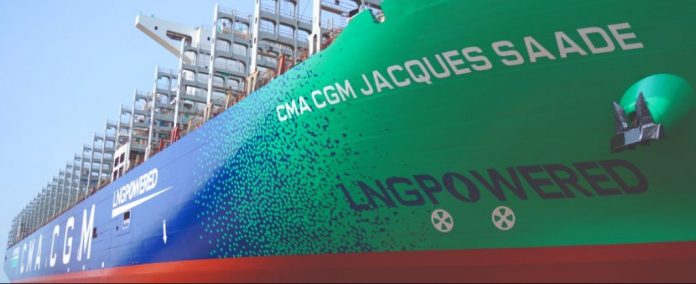
SEA-LNG and the Society for Gas as a Marine Fuel (SGMF) say that the latest study on LNG as a marine fuel showed that the gas could reduce greenhouse gas (GHG) emissions by up to 23%.
The ‘2nd Lifecycle GHG Emission Study on the use of LNG as a Marine Fuel’ from Sphera, formerly thinkstep which produced its first study in 2019, was commissioned by SEA-LNG and SGMF and used primary data from original engine manufacturers and fuel suppliers to calculate emission reductions.
The results also show that technological fixes on methane slip have reduced the level of methane in exhaust gases that is released into the atmosphere and SEA-LNG says that, “By 2030 engine manufacturers forecast that all LNG-fuelled engine technologies will have minimal levels of methane slip.”
Methane has been an Achilles heel for the gas, which is significantly more potent as a GHG than carbon but does not stay in the atmosphere for as long. According to the Sphera study methane slip from high pressure low speed two-stroke and four-stroke medium speed engines is very low, but the low pressure two-stroke engines have a way to go.
Low pressure two-stroke engines have eliminated only 50% of methane slip emissions, according to the Sphera study, but as low-pressure units are less costly they are the most likely to be installed in deepsea ships.
According to the International Maritime Organization (IMO)’s fourth GHG study consumption of LNG increased 0.9% over up to 2018, but methane emissions from the industry increased 87%.
IMO targets for a 40% reduction in carbon intensity by 2030, compared to 2008 emission levels, which means that even modern LNG engines fall substantially short of this target, particularly if expected growth is considered.
Nevertheless, SEA-LNG chairman Peter Keller said, “It is clear that LNG plays an important role in decarbonisation today with benefits available now. As we look ahead, it is essential that detailed emissions analysis from Well-to-Wake such as those performed for LNG are available for all alternative fuels contemplated, enabling shipowners to make the right decisions for their fleet.”
The study was conducted according to ISO standards said SEA-LNG and SGMF in a joint statement, adding, “It was also reviewed again by a panel of leading independent academic experts from key institutions in France, Germany, Japan and the USA. The analysis concluded that, in addition to the considerable air quality benefits it delivers, LNG can ‘beyond question’ contribute significantly to the International Maritime Organisation’s (IMO) GHG reduction targets.”
Data for the study was provided by original equipment manufacturers including; Caterpillar, GE, Man D&T, Rolls Royce (MTU), Wärtsilä and WIN-DG, and, from the supply side; ExxonMobil, Shell and Total. The project oversight team, led by Steve Esau from SEA-LNG and Mark Bell from SGMF, was fully supported by senior technical personnel from the member organisations of both coalitions.





